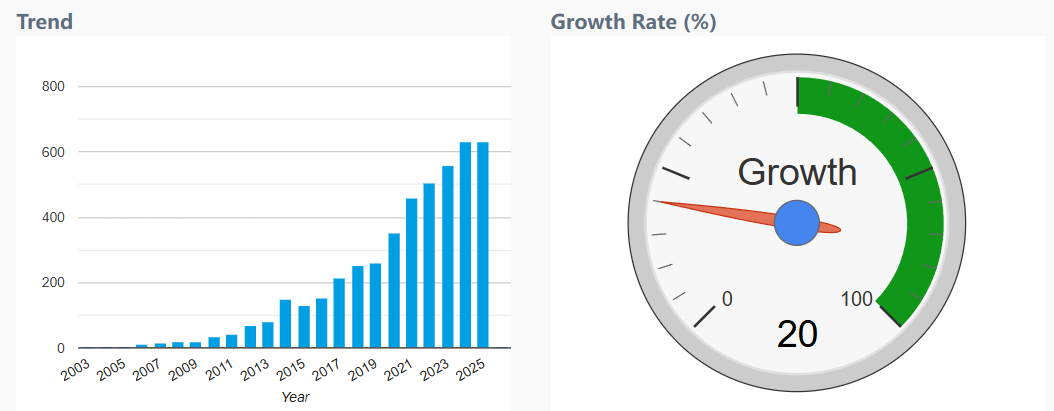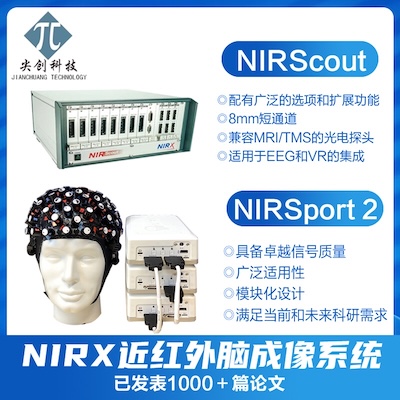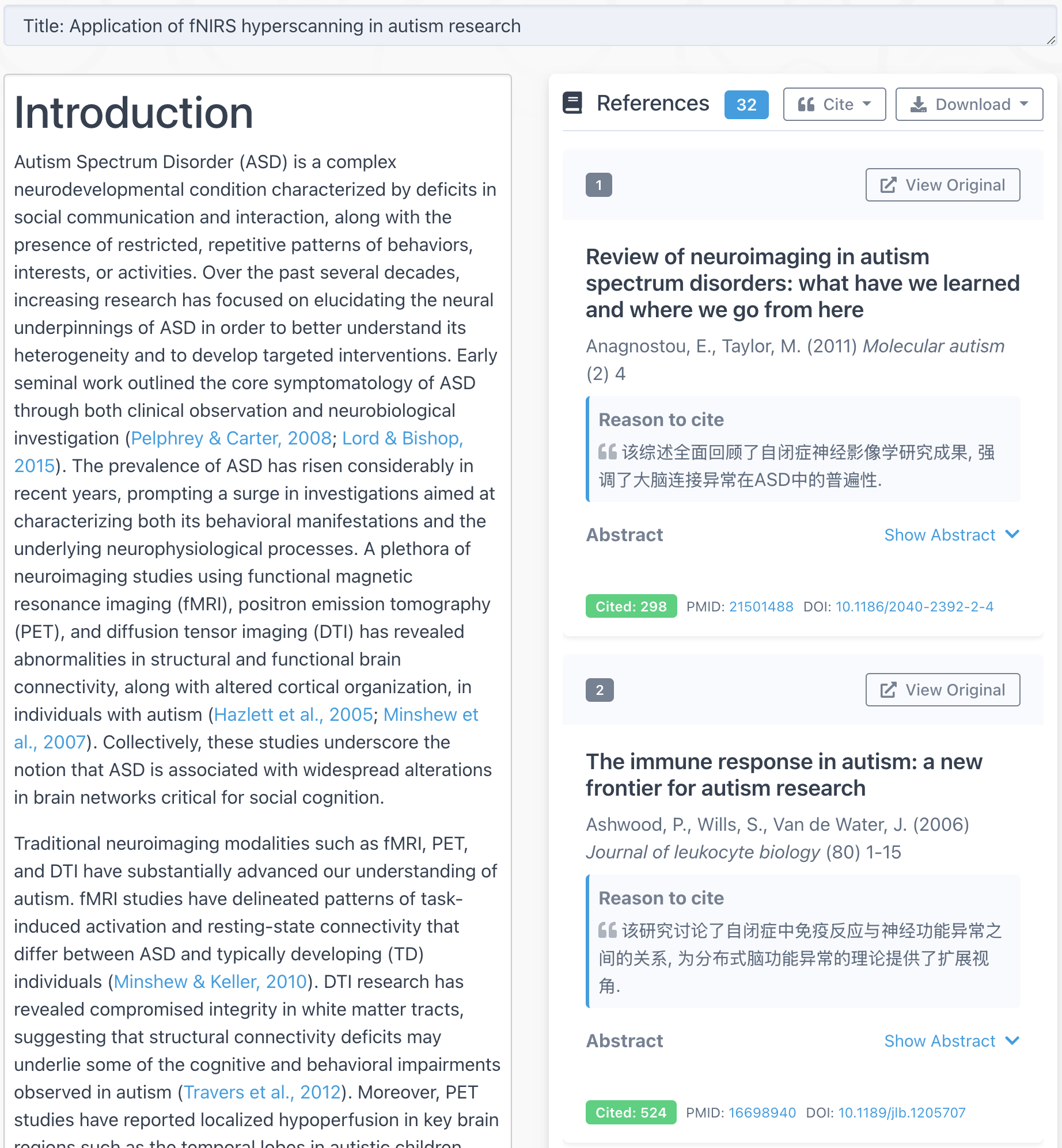
TL; DR
Stork now offers a free fNIRS Frontiers Weekly Newsletter: Synthesize all fNIRS papers published in the past week into coherent summaries. Delivered every Sunday afternoon (US time).
Subscribe here: https://www.storkapp.me/readingguide/
Over the past two decades, functional near-infrared spectroscopy (fNIRS) has evolved from a lab novelty into a widely used tool in cognitive neuroscience and clinical research. As fNIRS finds uses in everything from methodological advances to clinical diagnosis, from social neuroscience to child development, the number of publications has expanded at an exponential pace.
(Source: https://www.storkapp.me/meta/)
With that vitality comes information overload:
-
The literature keeps expanding, but the number of papers one can read thoroughly is limited.
-
Updates arrive in fragments, making it hard to see the bigger picture.
-
A small oversight can mean missing findings directly relevant to your work.
To help researchers stay ahead with the latest trends in research, Stork offers a free fNIRS Frontiers Weekly Newsletter. Each issue is a concise, structured summarizes of all fNIRS-related papers published in the past week—sent straight to your inbox every Sunday afternoon (US time).
Key benefits:
-
Skip manual searches – Save hours each week; no need to comb through multiple databases.
-
Stay current – Keep up with the latest discoveries, methodological advances, and applications worldwide.
-
Never miss breakthroughs – Catch important results in your subfield or adjacent areas.
-
Thematic integration – Not just a list: studies are grouped by topic (e.g., similar methods or questions) for a clearer overview.
-
One-click details – Authors’ names are hyperlinked; click to jump straight to the paper’s page (abstract/full text) without extra searching.
-
Language flexibility – Receive the newsletter in English or Chinese—your choice.



Here is an example email:
Brain Function in Motor Control and Learning
Research using functional near-infrared spectroscopy (fNIRS) has provided insights into the brain's activity during various motor tasks. In a study published in IEEE Transactions on Neural Systems and Rehabilitation Engineering, Wenxin Niu and colleagues utilized an integrated EEG-fNIRS system to show that discrete gait tasks elicit stronger beta-band suppression and task-specific neurovascular coupling compared to continuous walking. Similarly, a study in Neuroimage by Shengjun Wu from The Fourth Military Medical University found that motor imitation, an effective learning strategy, specifically increases activation in the primary somatosensory cortex. Investigating the impact of exercise, S T Venkateswaran reported in the Journal of Bodywork and Movement Therapies that yogic squats can alter cerebral hemodynamics by reducing deoxyhemoglobin during the practice. Furthermore, a scoping review in the American Journal of Surgery by Yao Xiao from Southern Medical University highlighted the growing use of physiological indicators like brain function to objectively assess surgical skills, though noting the field is still in its preliminary stages.
Social Interaction and Emotional Processing
fNIRS hyperscanning is a powerful tool for examining the neural underpinnings of social dynamics. In Neuroimage, Yanmei Wang from East China Normal University demonstrated that positive emotional contagion is associated with increased interpersonal brain synchronization in the mirror neuron and cognitive control systems. Another study in Biological Psychology by Xuhai Chen from Shaanxi Normal University revealed that positive feedback after cooperative failure enhances romantic couples' performance and neural synchrony in the right middle frontal gyrus. Research in the Journal of Neuroscience by Yingjie Liu from North China University of Science and Technology found that interpersonal neural synchrony can predict deception, with friend dyads showing higher synchrony than strangers, especially in reward-processing regions during gain contexts.
Cognitive Function, Stress, and Anxiety
Studies have also explored how brain activity relates to cognitive states like stress and anxiety. Shijia Li and their team from East China Normal University published in Psychophysiology that acute stress enhances inhibitory control over avoidance behaviors, accompanied by deactivation of the prefrontal cortex. In the European Journal of Neuroscience, Xianghe Zhu from Wenzhou Medical University provided neurophysiological evidence that Autonomous Sensory Meridian Response (ASMR) can relieve anxiety by reducing activity in brain regions like the prefrontal cortex, which are typically activated during anxiety.
Language Development and Processing
The neural basis of language acquisition is another active area of fNIRS research. A study in Neurophotonics by Li Sheng from The Hong Kong Polytechnic University provided evidence for early functional specialization for language in the left inferior frontal gyrus in toddlers. In Brain and Language, Judit Gervain from the University of Padua found that newborns can detect prosodic violations even in an unfamiliar language, suggesting an innate sensitivity to speech contours that is modulated by prenatal experience. Focusing on clinical populations, Chunming Lu from Beijing Normal University reported in the Journal of Speech, Language, and Hearing Research that a mother's brain activity can effectively predict the language ability of her child with hearing loss, supporting a "maternal mirror" hypothesis.
Clinical Applications and Methodological Considerations
fNIRS is proving to be a valuable tool for understanding and diagnosing various clinical conditions. A systematic review in Frontiers in Neurology by Liang Gong from Chengdu Medical College concluded that fNIRS is a promising tool for identifying mild cognitive impairment and Alzheimer's disease by detecting altered brain activation and connectivity. Another study in the same journal by Yong Xu from The First Hospital of Shanxi Medical University showed that transcranial magnetic stimulation improves cognitive function in post-stroke patients, with changes correlating to neurotrophic factor levels and brain connectivity. In Neurophotonics, Stefan Weder from the University of Bern found that fNIRS can reveal distinct brain activation patterns between good and poor performers among cochlear implant users, highlighting the role of cortical factors in rehabilitation success. Research in the Journal of Biophotonics by Xiaoying Tang from the Beijing Institute of Technology identified abnormal brain activation patterns, including impaired fronto-parietal network connectivity, in patients with post-acute sequelae of COVID-19. Finally, addressing a critical methodological issue, Luca Pollonini from the University of Houston, writing in Neurophotonics, outlined an inclusive approach to improve the recruitment and retention of women of color in fNIRS research, helping to reduce systemic exclusion.
This makes it easy to catch up quickly. You can look across themes to get a sense of the whole field. Or, if you only care about one corner of fNIRS, you can just follow that small theme. Either way, it saves you time and helps you spot the updates that matter most, right when you need them.
Subscribe: https://www.storkapp.me/readingguide/





